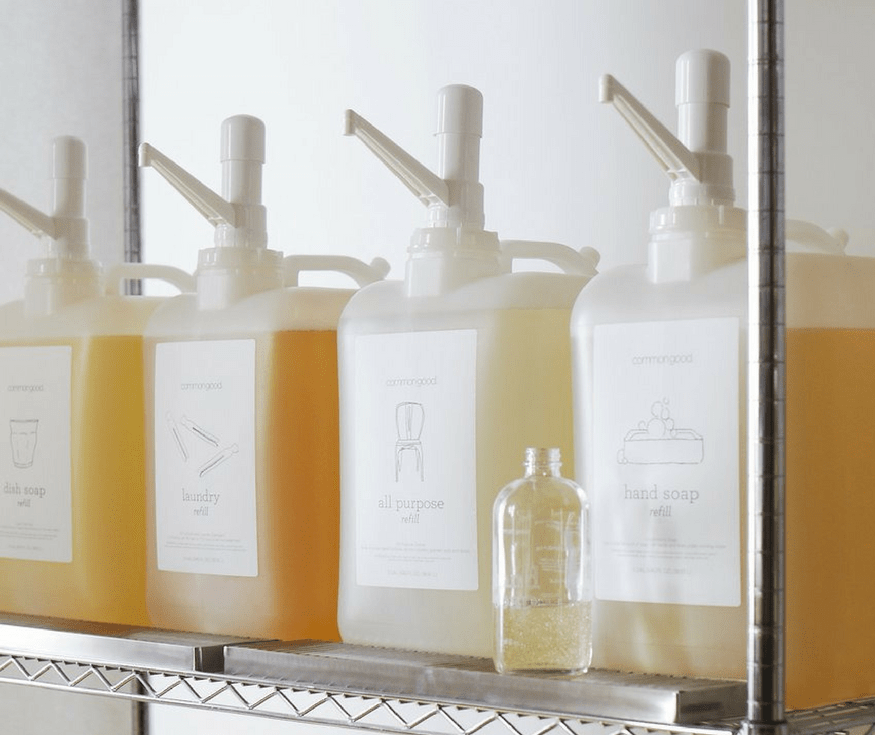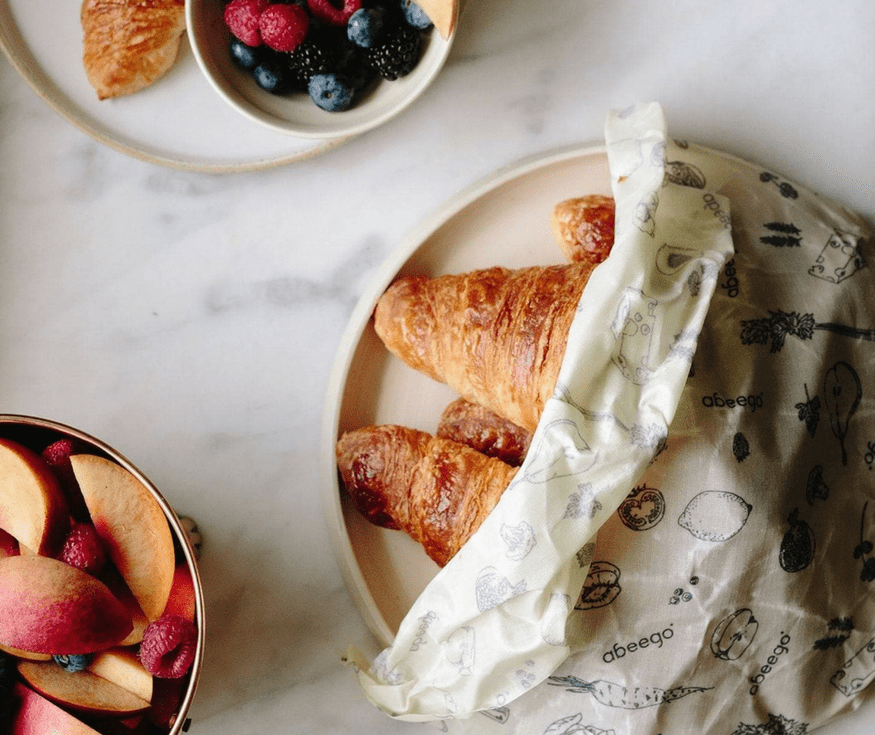The Zero Waste Home: 13 Easy Swaps for the Kitchen
The kitchen is easily the most used in the home and has the biggest potential for waste production. Here are some easy things you can do to make your kitchen happy and waste-free.
Food Packaging and Storage
Step away from the cling-film! Although it may be convenient, this innocent looking piece of plastic will stick around long after we are gone. Try a beeswax wrap instead. You use the heat from your hands to get it to close around whatever you are wrapping. If beeswax is not your thing, then use a plate as a simple cover for your food. You can also use If You Care baking paper (which is biodegradable and recyclable) or kitchen foil (more wasteful but can be recycled if cleaned). I use old food jars to store foodstuffs, and you can use them in the freezer – just make sure you leave a space at the top or the glass may break. Check out this post about freezing food plastic free.
For food storage, you can use old tubs you already have, but I would recommend investing in some great stainless steel containers. I love mine. They are great for food storage and I always get compliments when I take them out at work for lunch.
Cleaning
I use a Redecker dish brush with a replaceable head. It cleans brilliantly and is biodegradable. Simply buy a replacement head when you need to. However, sometimes you really need a scouring pad to get rid of baked-on food. Try the Rawganique Hemp scrub pad. It is completely plastic free and compostable at the end of its life.
Dishcloths nearly always end up in the landfill. You can use old rags to clean or try Skoy Cloths which are fantastic cleaning items made from natural cotton and wood-based cellulose that are 100% biodegradable when composted.
Kitchen towels are used a lot, not usually recyclable and are designed to be thrown away after one use. Use Barefoot Bamboo Reusable Towels instead. They are strong, absorbent and can be thrown in the washing machine to be used again and again.

Dish soap can be tricky. Most dish soaps are not kind to the environment, so it is a compromise to get your dishes clean and be eco-friendly. Common Good make a great soap and you can refill your bottles at certain stores. You can also use a bar of soap by swirling it around your sink water and dabbing your dish brush on it as required; however, this method does not foam and is not for everyone. There are many recipes online about making your own washing up liquid, but I particularly like this one as it is super easy! You can also buy bulk containers of Castile soap, and decant into your own container. Not ideal but does reduce packaging in the long run.
Have a dishwasher? You can try making your own dishwasher powder (there are loads of recipes online) or simply buy dishwasher powder detergent that comes in a cardboard box or sustainable packaging.
If you need to use washing up gloves, try If You Care household gloves. They are made from latex and are compostable if you chop them into small pieces.
Sodium bicarbonate, vinegar and lemon are fantastic natural household cleaners, and also cheap! You can by sodium bicarbonate in cardboard boxes online or at some stores. Vinegar can be bought in glass bottles at some supermarkets and you can buy in bulk at some stores. You will have to check what is available in your area. Lemons are fantastic natural cleaners and are great at removing stains. This guide by Plastic Free July gives loads of tips on how to clean using waste-free alternatives.
Rubbish and Waste
Don’t beat yourself up for producing waste – it is very difficult to be completely waste-free. As long as you’re actively working to minimise the amount you produce, you’re heading in the right direction. Here are a few tips to help you along:

If you have a garden, start to compost at home. Check out this article on your options. I am lucky that my council has food waste bins that they collect. (I live in a tiny flat in London so this is really my only option!)
We should not completely rely on recycling (it’s energy consuming and simply delays plastics from entering landfill), but it is much better than sending items straight to landfill. Every council varies on what they recycle, so check out your local council’s website for more information. If it cannot be recycled by curbside pickup, you can directly take your items to recycling centres. Larger supermarkets can recycle soft plastics (e.g. plastic bags, soft plastic packaging) so just collect these to recycle there. I use a recycling basket made from jute for my “bin” that looks fantastic in my kitchen.
In an ideal world, you would not need a landfill bin, and some people manage to achieve this. I have a very small bin that I line with newspaper and very few items end up in here; it is usually something I have received in the post, stickers on fruit and veg, etc. By having a small bin, it encourages you to use the recycling bin first if you can. One day I hope to have no bin, but for now, this is what I do.
By following these simple changes, you can make your kitchen greener. Next time we will talk about how to reduce your waste out and about including how best to do your food shop. Happy Zero Waste Week!




